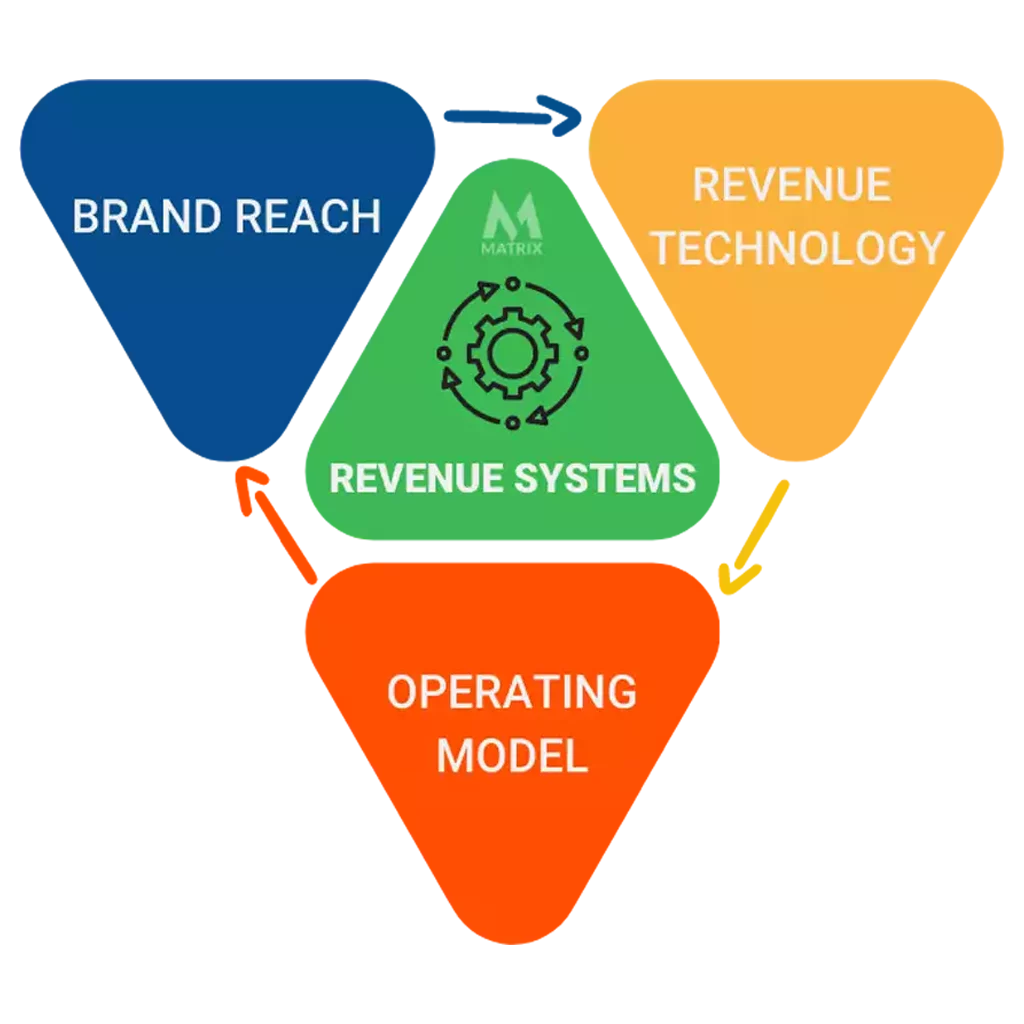Selecting the Right Sales Channel Strategy for Distribution
Your distribution channel strategy includes selecting the channel type, determining the distribution intensity, designing the channel configuration, and managing the channel.
A channel strategy is a plan that outlines how a business will reach its target market through various channels of distribution. This plan should include the different types of media used to communicate with the target market and the specific messages that will be delivered.
It’s important to have a clear and concise channel strategy to ensure that all marketing efforts are aligned and working towards the same goal. In this blog post, we’ll discuss what a Channel Strategy is, what goes into it, and how you can create your own for your business. Stay tuned!
Do you want to learn how to create a successful channel strategy for your business?
A Channel Strategy is a plan that outlines how a business will reach its target market through various distribution channels. This plan should include the different types of media used to communicate with the target market and the specific messages that will be delivered.
It’s important to have a clear and concise channel strategy to ensure that all marketing efforts are aligned and working towards the same goal. In this blog post, we’ll discuss a channel strategy, what goes into it, and how you can create your own for your business.
By learning how to create a channel strategy, you’ll be able to effectively reach your target market and deliver your message in a way that resonates with them. You’ll also be able to track the success of your strategy so you can make necessary adjustments along the way.
Type of Distribution Channel
A traditional distribution channel is a group of independent organizations, each trying to look out for itself, with little concern for the total performance of the channel.
Marketing executives in many firms realize the advantages of managing the channel as a coordinated or program system of participating organizations.
These Vertical Marketing Systems (VMS) dominate the retail sector today and are significant factors in the business and industrial products and services sectors.
Vertical Marketing Systems

Professionally managed and centrally program networks pre-engineered to achieve operating economies and maximum market impact.
Vertical Marketing Systems are rationalized and capital-intensive networks designed to achieve technological, managerial, and promotional economies through the integration, coordination, and synchronization of marketing flows from the point of production to the point of ultimate use.
In a VMS, one company typically managed is the distribution channel. A firm that is the channel manager programs and coordinates channel activities and functions. The participating organizations are linked through ownership by one firm, and you’re a contractual agreement or an administrative relationship.
Prescribed rules and operating guidelines indicate each participant’s functions and responsibilities. The channel leader supplies management assistance and services to the participating organizations.
Distribution Intensity
Distribution intensity is best examined geographically. It uses an intensive distribution approach if management distributes its products in all or most retail outlets in a trading area that normally carries such a product. The trading area may consist of a city or some portion of a city.
If only one retailer or dealer in the trading area distributes a product, the management is following an exclusive distribution strategy. Different degrees of distribution intensity can be implemented.
Distribution intensity depends on several factors, some the result of management’s preferences and some determined by product in market influences.
The major steps in making the decision are:
Identifying the range of feasible distribution intensities taking into account the size and characteristics of the target market, product, and the requirements likely to be imposed by perspective intermediaries.
Select the alternatives compatible with the proposed target market and marketing program positioning strategy.
Choosing the alternative that:
- Provides the best strategic fit
- Meets executive management’s financial performance expectation
- It will be significantly attractive to intermediaries so that they will properly perform assigned functions
The type of product and the target market to be served may determine distribution intensity. For example, expensive products like BMWs and Audi luxury automobiles do not require intensive distribution to reach potential buyers.
Channel Configuration
The next step in selecting a distribution strategy is deciding how many levels of organizations are in the channel and the types of intermediaries to use. A sales channel strategy is required to see revenue streams.
Several factors influence the channel configuration decision, including:
- End-user considerations
- Product characteristics
- Capabilities and resources of the manufacturer
- Functions and need to be performed
- Availability and capabilities of channel members
Channel Management

After deciding on the channel design, management must identify, evaluate, and recruit specific sales channel partners. Finding competent and motivated channel members is critical to implementing your channel strategy. The choice of channel type, distribution intensity, and configuration determine many specific channel management activities.
Channel management includes deciding how to assist channel members, developing operating policies, providing incentives, selecting promotional programs, and evaluating results.
Managing the channel consumes much of management’s time since channel design is not modified frequently. Changes in channel design may have serious consequences for some members.
Selecting a sales channel strategy
The steps in selecting a channel strategy. Marketing management must:
- Choose a channel arrangement to be used
- Determine the desired intensity of distribution
- Decide on the channel configuration
One of the first issues in selecting a channel strategy is deciding whether to manage a channel or assume a participant role. The choice often depends on how much bargaining power a company can exert a negotiating with other organizations in the channel system, often called the supply chain.
Management may decide to manage or coordinate operations in the distribution channel, become a member of a vertically coordinated channel, or become a member of a conventional channel system.
Access to the Target Market
Management choice of the market strategy must be closely coordinated with a channel strategy since a channel connects suppliers to the end users. The market target decision cannot be finalized until the channel strategy is established.
Financial Considerations and your sales channel strategy
Two financial questions affect channel strategy. First, are resources available for launching management’s preferred strategy?
A small manufacturer or producer may not have the money to build a distribution network. Second, the company must estimate the revenue cost impact of alternative channel strategies. This task grows more complex as a channel network expands to include several levels and types of organizations.
Flexibility and Control Considerations
Management should consider how much flexibility it wants in the channel network and how much control it would like over other channel participants. An example of flexibility is how easily changes can be made in channel participants.
A conventional channel provides little opportunity for control by a particular firm, yet it offers flexibility and channel relationships. Legal and regulatory constraints may also affect channel strategies in pricing, exclusive dealing, and allocation of market coverage.
Analyzing sales channel strategy
Changes in distribution may improve relationship management, customer satisfaction, and productivity. Companies with direct sales forces may consider using indirect channels (wholesalers, distributors, dealers, and retailers) to serve portions of the customer base.
Strategies at Different Channel Levels
Wholesalers and retailers are also concerned about channel strategies; in some instances, they may exercise primary control over channel operations.
Channel strategy can be examined from any level in the distribution network. The major distinction lies in the point of view (wholesalers, distributors, dealers, and retailers) used in developing the strategy.
Channel members may have fewer alternatives to consider than producers and think us less flexibility and channel strategy. However, their approach to channel strategy should be active rather than passive.
Wrap-Up and sales channel strategy
Selecting a channel strategy begins when management decides whether to manage or assume a particular role. The strategic analysis identifies and evaluates channel alternatives.
Several factors should be evaluated, including access to the target market, channel functions performed, financial considerations, and legal and control constraints.
The channel strategy establishes several guidelines for price and promotion strategies.
Give us your best tip for selecting the right channel strategy.
We’re Listening: Have something to say about this article? Share it with us on Facebook, Twitter or our LinkedIn.
General FAQs
What is a sales channel strategy?
A sales channel strategy is a plan of action designed to maximize the efficiency and effectiveness of an organization’s outreach efforts. It involves identifying target customers, utilizing different channels (online, offline, and partner-based) for connecting with them, defining budget allocations for each available channel, establishing clear objectives and metrics to measure success, and outlining methods for evaluating results. Ultimately, a sales channel strategy helps companies optimize their business processes to reach a larger customer base better or acquire more conversions from existing leads.
How can I find the right sales channels for my business?
The most effective way to find the right sales channels for your business is by researching your target customer. Identify their demographics, interests, and behaviors. Then look for platforms these individuals are using and establish accounts on those sites to reach them directly. Some of the most common sales channels include email campaigns, web ads, search engine optimization (SEO), social media marketing (SMM), paid search or pay-per-click (PPC) advertising, display ads through a network like Google Display Network (GDN), and influencer marketing.
How do I evaluate different sales channels and decide which ones to use?
To evaluate different sales channels, it is important to understand your target customer and the platforms they are using. Then you can research each of these potential channels and determine which has the most potential for success with that audience. Additionally, consider factors such as cost of implementation, ease of use, available resources (time and budget), management capabilities for tracking results, scalability, and effectiveness in reaching qualified leads or customers. Finally, establish clear objectives, measure their performance against key metrics to determine ROI, and make educated decisions on what to use going forward.
What tools can I use to measure the performance of my sales channels?
Tools such as Microsoft Dynamics CRM and HubSpot can help you track the performance of your sales channels. These tools allow you to monitor customer interactions, measure customer engagement, analyze customer data to identify trends and opportunities for improvement, track ROI on different campaigns, and optimize marketing strategies. Additionally, they provide analytics dashboards that make it easier to visualize key performance metrics (such as open rates or conversion rates), so you can easily understand how well each sales channel performs.





